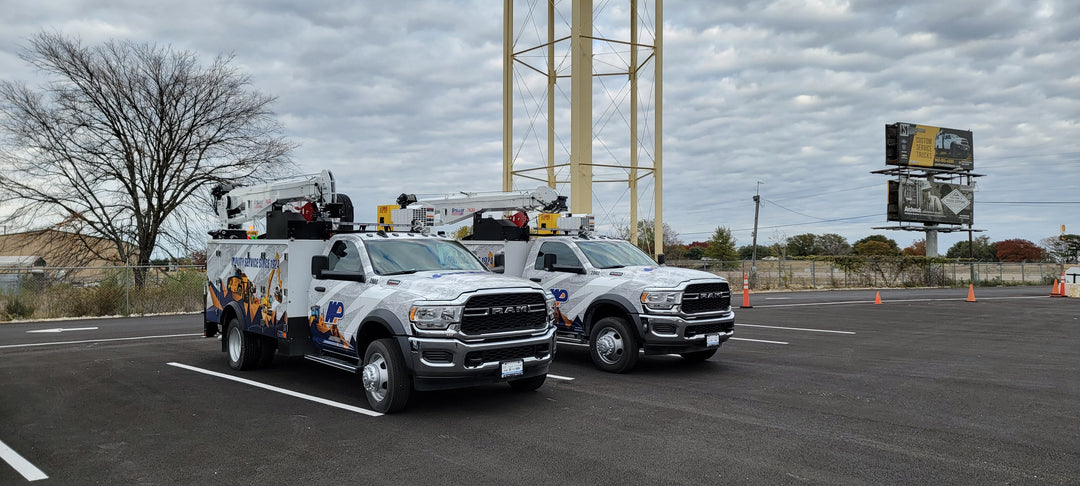How To Use Knifeless Tape: Choosing Between Finish Line and Design Line
When it comes to vehicle wraps and custom designs, achieving clean, precise lines is crucial. Knifeless tape has revolutionized the process, offering a safe and efficient way to cut vinyl without risking damage to the underlying surface. In this comprehensive guide, we’ll dive into everything you need to know about using knifeless tape, including when to choose Finish Line or Design Line to get professional-grade results.
What is Knifeless Tape?
Knifeless tape is a specialized tool designed for cutting vinyl wraps, decals, or graphics without the need for a blade. This innovative tape contains a thin filament embedded in its adhesive layer, which can be pulled to create a clean, sharp cut. Knifeless tape is a favorite among professional installers due to its safety, precision, and versatility.
Benefits of Using Knifeless Tape
-
Protects the Surface: Unlike traditional cutting methods, knifeless tape eliminates the risk of scratching or damaging paint, glass, or other surfaces.
-
Precision Cuts: The embedded filament allows for highly accurate and consistent cuts, even on complex curves and edges.
-
Versatile Application: Knifeless tape works on a variety of materials, including vinyl, carbon fiber, and PPF (Paint Protection Film).
-
Time-Saving: It simplifies the installation process by reducing the need for touch-ups or corrections.
Types of Knifeless Tape
Two of the most popular types of knifeless tape are Finish Line and Design Line. Each serves a specific purpose, and choosing the right one can make or break your project.
Finish Line
Best For:
-
Straight lines
-
Large panels
-
Vehicle wraps
Finish Line is the go-to knifeless tape for cutting straight lines and larger areas. Its robust filament makes it ideal for creating seamless transitions between panels or cutting through thicker vinyl materials.
Applications:
-
Full vehicle wraps
-
Straight edge designs
-
Overlapping seams
Design Line
Best For:
-
Curves and intricate designs
-
Custom graphics
-
Small, detailed areas
Design Line knifeless tape is engineered for flexibility, making it perfect for achieving smooth, precise cuts on curves and complex shapes. It’s ideal for intricate customizations where precision is paramount.
Applications:
-
Accent lines
-
Detailed logos
-
Rounded corners
How To Use Knifeless Tape Step-by-Step
Step 1: Prepare the Surface
Ensure the surface is clean and dry. Any dirt, dust, or grease can interfere with the adhesive and compromise the quality of the cut.
Step 2: Apply the Tape
-
For Straight Lines: Use Finish Line tape. Apply it along the edge or seam where you want the cut.
-
For Curves and Complex Shapes: Use Design Line tape. Carefully follow the contours of your design.
Press the tape firmly onto the surface to ensure good adhesion.
Step 3: Lay the Vinyl
Carefully apply the vinyl over the knifeless tape, smoothing out any bubbles or wrinkles as you go. Make sure the tape’s filament remains in place beneath the vinyl.
Step 4: Cut the Vinyl
-
Pull the filament at a sharp angle, cutting through the vinyl.
-
Slowly and steadily guide the filament to ensure a clean, smooth cut.
-
Remove the excess vinyl and tape.
Step 5: Finish the Edges
Press down the edges of the vinyl to ensure a seamless finish. Use a heat gun if necessary to help the vinyl conform to the surface.
When To Choose Finish Line or Design Line
Selecting the right type of knifeless tape depends on your project’s requirements. Here’s a quick comparison:
| Feature | Finish Line | Design Line |
|---|---|---|
| Line Type | Straight | Curved |
| Best For | Full wraps, straight seams | Intricate designs, custom graphics |
| Material Thickness | Works with thicker materials | Ideal for thinner, more flexible vinyl |
| Ease of Use | Simple for large, straightforward areas | Requires more precision for complex work |
Pro Tips for Perfect Cuts
-
Practice First: If you’re new to knifeless tape, practice on a small, flat surface before tackling larger or more intricate projects.
-
Keep the Filament Taut: Pull the filament at a consistent angle and tension to avoid jagged cuts.
-
Work in Sections: For large areas, work in smaller sections to maintain control and accuracy.
-
Use Proper Tools: A squeegee and heat gun can help you achieve a flawless finish.
Common Mistakes to Avoid
-
Inadequate Surface Preparation: Always clean the surface thoroughly to ensure the tape adheres properly.
-
Rushing the Filament Pull: Pulling too quickly can result in uneven cuts or broken filament.
-
Applying Too Much Heat: Excessive heat can weaken the tape’s adhesive and affect the cut quality.
-
Improper Tape Placement: Take your time to align the tape accurately before cutting.
Why Knifeless Tape is Essential for Professionals
Knifeless tape is not just a tool; it’s a game-changer for vinyl wrap and graphics installation. Its ability to deliver clean, precise cuts without the risk of surface damage has made it an industry standard. Whether you’re a seasoned professional or a DIY enthusiast, mastering knifeless tape will elevate the quality of your work.
Conclusion
Understanding how to use knifeless tape and knowing when to choose between Finish Line and Design Line can make all the difference in achieving a professional-grade result. By following this guide, you’ll be equipped to tackle any project with confidence, ensuring clean, precise lines that enhance the final look of your design. Whether you’re working on a full vehicle wrap or intricate custom graphics, knifeless tape is your key to success.




